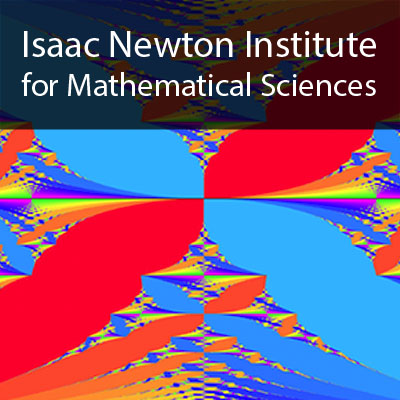Kinetic transport in crystals and quasicrystals
1 hour 5 mins,
947.02 MB,
MPEG-4 Video
640x360,
29.97 fps,
44100 Hz,
1.94 Mbits/sec
Share this media item:
Embed this media item:
Embed this media item:
About this item

| Description: |
Marklof, J (University of Bristol)
Thursday 26 March 2015, 10:00-11:00 |
|---|
| Created: | 2015-03-31 14:51 |
|---|---|
| Collection: | Periodic and Ergodic Spectral Problems |
| Publisher: | Isaac Newton Institute |
| Copyright: | Marklof, J |
| Language: | eng (English) |
| Abstract: | The Lorentz gas is one of the simplest, most widely used models to study the transport properties of rarified gases in matter. It describes the dynamics of a cloud of non-interacting point particles in an infinite array of fixed spherical scatterers. More than one hundred years after its conception, it is still a major challenge to understand the nature of the kinetic transport equation that governs the macroscopic particle dynamics in the limit of low scatterer density (the Boltzmann-Grad limit). Lorentz suggested that this equation should be the linear Boltzmann equation. This was confirmed in three celebrated papers by Gallavotti, Spohn, and Boldrighini, Bunimovich and Sinai, under the assumption that the distribution of scatterers is sufficiently disordered. In the case of strongly correlated scatterer configurations (such as crystals or quasicrystals), we now understand why the linear Boltzmann equation fails and what to substitute it with. A particularly striking featur e of the periodic Lorentz gas is a heavy tail for the distribution of free path lengths, with a diverging second moment, and superdiffusive transport in the limit of large times.
Joint work with A. Strombergsson and B. Toth. |
|---|---|
Available Formats
| Format | Quality | Bitrate | Size | |||
|---|---|---|---|---|---|---|
| MPEG-4 Video * | 640x360 | 1.94 Mbits/sec | 947.02 MB | View | Download | |
| WebM | 640x360 | 628.81 kbits/sec | 299.36 MB | View | Download | |
| iPod Video | 480x270 | 522.24 kbits/sec | 248.63 MB | View | Download | |
| MP3 | 44100 Hz | 250.11 kbits/sec | 119.07 MB | Listen | Download | |
| Auto | (Allows browser to choose a format it supports) | |||||

